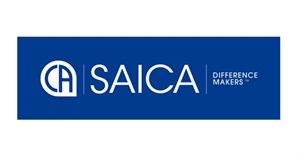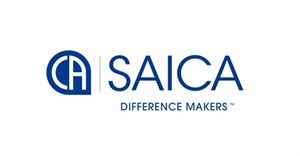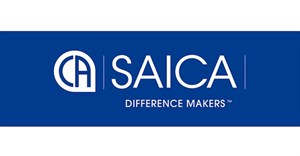Subscribe & Follow
Jobs
- Payroll Accountant Johannesburg North
- Debtors Controller East Rand
- Accountant Pomona
- Bookkeeper Cape Town
- Financial Controller/Junior Accountant Pinetown
- Accounting Clerk Knysna
- Junior Accounts Clerk Cape Town
- Bookkeeper and Sales Administrator Cape Town
- SAIPA Trainee Accountant Cape Town
- Accountant/Administrator Johannesburg
Amendments to five International Financial Reporting Standards

These annual improvements are so sufficiently minor or narrow in scope that they were packaged in one document, even though the amendments are unrelated. Annual improvements are limited to changes that either clarify the wording in an IFRS Accounting Standard or correct relatively minor unintended consequences, oversights or conflicts between the requirements of the standards.
These improvements include amendments to five standards, which are effective for annual reporting periods beginning on or after 1 January 2026.
The amendments in summary were as follows:
- IFRS 1 First-time Adoption of International Financial Reporting Standards (IFRS 1):
Stakeholders informed the IASB about potential confusion arising from an inconsistency between the wording of IFRS 1 which referred to ‘conditions’ for hedge accounting rather than the ‘qualifying criteria’ for hedge accounting in IFRS 9 Financial Instruments.
To address this inconsistency the IASB amended IFRS 1 to align with the wording in IFRS 9 and included a cross reference for understandability.
- IFRS 7 Financial Instruments: Disclosures (IFRS 7):
When the IASB issued IFRS 13 Fair Value Measurement in May 2011, it amended paragraph 28 of IFRS 7 Financial Instruments: Disclosure to make the wording of that paragraph consistent with the wording and concepts used in IFRS 13 but did not amend paragraph IG14.
To address the inconsistency the IASB amended references of “not observable market data”, and rather refers to the requirements of IFRS 13 in determining the fair value hierarchy, in quantifying the gain or loss on derecognition of a financial asset.
Further to the above, stakeholders informed the IASB about a lack of clarity related to whether the examples provided in the Accompanying Guidance and IFRS Practice Statements in respect of IFRS 7, illustrate all the requirements in the referenced paragraphs of IFRS 7. To address this the IASB amended the illustrative examples, specifically IG14 and IG20B to articulate and provide the clarity to which the requirements of the standard were not illustrated.
- IFRS 9 Financial Instruments (IFRS 9):
Interaction with IFRS 16: Leases
Stakeholders informed the IASB about a lack of clarity related to how a lessee accounts for the derecognition of a lease liability. Some stakeholders said that when a lease liability has been extinguished in accordance with IFRS 9, it was unclear whether the lessee was required to apply paragraph 3.3.3 and recognise any resulting gain or loss in profit or loss.
The amendment clarifies that, when a lessee has determined that a lease liability has been extinguished in accordance with IFRS 9, the lessee is required to apply paragraph 3.3.3 and recognise any resulting gain or loss in the statement of profit or loss.
Interaction with IFRS 15: Revenue from Contracts with Customers
An entity applying paragraph 105 of IFRS 15 is required to present any unconditional rights to consideration separately as a receivable. Stakeholders expressed concern that a receivable might be measured, at initial recognition, at an amount which differs from the amount of the transaction price recognized as revenue, in accordance with IFRS 15.
To resolve the differential, the standard has been amended to remove the term ‘transaction price’ which was previously used in the determination of the initial measurement of trade receivables (paragraph 5.1.3 of IFRS 9) and listed in Appendix A as a defined term and rather refers to the “the amount determined by applying IFRS 15”.
- IFRS 10 Consolidated Financial Statements (IFRS 10):
Stakeholders informed the IASB that the requirements in paragraphs B73 and B74 of IFRS 10 may be considered contradictory in certain circumstances. Paragraph B73 refers to ‘de facto agents’ as parties acting on the investor’s behalf and states that the determination of whether other parties are acting as de facto agents requires judgment. However, the second sentence of paragraph B74 used more conclusive language by stating that a party is a de facto agent when those that direct the activities of the investor have the ability to direct that party to act on the investor’s behalf.
The IASB amended paragraph B74 to use less conclusive language and to clarify that the relationship described in paragraph B74 is just one example of a circumstance in which judgment is required to determine whether a party is acting as a de facto agent.
- IAS 7 Statement of Cash Flows (IAS7):
IAS 7 previously referred to the “cost method” in accounting for cash flows between investments in subsidiaries, associated and joint ventures. This term is no longer defined in IFRS Accounting Standards. The amendment removes this reference and replaces it with “at cost”.
The amendments do not include transition requirements, with the exception of the amendment 3.1 above. The amendment to IFRS 9 paragraph 2.1(b)(ii) shall be applied to lease liabilities extinguished on or after the beginning of the annual reporting period in which the entity first applies the amendment.
Earlier application of the above amendments is permitted. If an entity applies that amendment for an earlier period, it shall disclose that fact.
About Leeann Naidoo
Senior Manager | Audit Quality & Risk | IFRS on behalf of SAICA- Amendments to five International Financial Reporting Standards23 Aug 16:04
- Saica calls for improved working environments to attract and retain top talent in the public sector30 Jul 14:53
- Artificial Intelligence can be a thief’s best friend18 Jul 14:00
- What if the audit profession had an amplified voice?17 Jul 10:29
- Navigating emerging technologies in the audit profession10 Jul 12:49






















